-
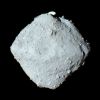 +23 +2
+23 +2A crucial building block of life exists on the asteroid Ryugu
Uracil, a building block of life, has been found on the asteroid Ryugu. Yasuhiro Oba and colleagues discovered the precursor to life in samples collected from the asteroid and returned to Earth by Japan’s Hayabusa2 spacecraft, the team reports March 21 in Nature Communications.
-
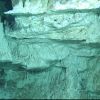 +1 +1
+1 +1Surprising newfound ocean bacteria could aid search for alien life
In the deep waters of Earth's oceans, scientists have discovered a new species of bacteria flourishing in the plumes from submarine hot springs. Such hot springs likely also exist on oceanic worlds like Jupiter's moon Europa and the Saturn satellite Enceladus, so these observations sharpen our understanding of the forms alien life might take on those moons, astronomers say.
-
 +1 +1
+1 +1How much time late is the nearest store open me
How to known what is the last time when is the nearest store to me is open or not.
-
 +16 +5
+16 +5The world’s newest space telescope just found something that shouldn’t exist
The James Webb Space Telescope was built by the international community to help humanity better understand the stars, but images captured during a recent space survey may have just made our understanding of the universe even more complicated.
-
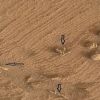 +15 +4
+15 +4Is it a millipede, or a rock? The ‘evidence’ we’ve already found life on Mars
Group of academics say they have identified fossilised sponges, corals, worm eggs, algae and more on planet's surface
-
 +21 +3
+21 +3Meteorite Crater Discovered in the Vineyard of a Winery
Our planet has been bombarded by celestial bodies and meteorites since the first moment of its formation. While some of these meteorites disappear while still in the atmosphere, some can reach the earth and shape geographical landforms. For example, some gulfs were formed in this way. In fact, considering the Cretaceous-Paleogene extinction, it can even be said that some meteorites had an impact on biological evolution.
-
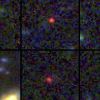 +2 +1
+2 +1James Webb Telescope discovers six massive 'universe breaker' galaxies
Astronomers have detected what appear to be six massive and very ancient galaxies, a discovery they say could upend our understanding of how galaxies formed at the very beginning of the universe. While the new James Webb Space Telescope has already spotted even older galaxies, it’s the size and maturity of these six apparent mega-galaxies that have stunned scientists.
-
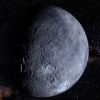 +3 +1
+3 +1This dwarf planet has a ring instead of a moon, and scientists don't know why
Recent telescope data revealed that a small planet in the far reaches of our solar system has a dense ring round it. And scientists are baffled as to why. The planet, Quaoar, is one of roughly 3,000 small planets that orbit the sun beyond Neptune, and at 690 miles (1,110-kilometers) wide, it’s about the seventh largest, with Pluto and Eris ranking as the biggest.
-
 +4 +1
+4 +1Australian rangers find 'monster' 2.7 kg cane toad
Australian rangers have killed an invasive "monster" cane toad discovered in the wilds of a coastal park—a warty brown specimen as long as a human arm and weighing 2.7 kilograms (6 pounds). The toad was spotted after a snake slithering across a track forced wildlife workers to stop as they were driving in Queensland's Conway National Park, the state government said.
-
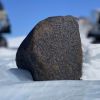 +12 +2
+12 +2Scientists find 17-pound meteorite in icy Antarctica
A daring team of scientists has endured the inhospitable conditions of the icy desert of Antarctica to recover five new meteorites, including a near-17-pound monster space rock. The team of scientists included Field Museum and the University of Chicago researcher Maria Valdes, who estimated that of the 45,000 meteorites recovered to date from the icy wasteland of Antarctica, only 100 or so have been as large as the largest member of this new haul, which weighs 16.7 pounds (7.6 kilograms).
-
 +13 +1
+13 +1Scientists discover new emperor penguin colony in Antarctica - by spotting their poo from space
The colony, located at Verleger Point, West Antarctica, is home to 500 birds. It brings the total of known emperor penguin sites around the continent to 66, according to scientists at the British Antarctic Survey.
-
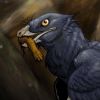 +22 +2
+22 +2Scientists Find a Mammal's Foot Inside a Dinosaur, a Fossil First
Paleontologists taking a second look at a species of small, four-winged dinosaur have found a fossilized mammalian foot in the predator’s stomach. It’s the first concrete evidence of dinosaurs eating mammals, the researchers say.
-
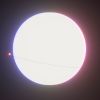 +21 +4
+21 +4Star may have drawn scorching 'hell planet' into super-close orbit
You thought Venus was hot? While the planet does have an average surface temperature of nearly 900 degrees Fahrenheit (500 degrees Celsius), there's an exoplanet just 40 light-years away from Earth that has a surface temperature a scorching three times hotter: 3,600 degrees Fahrenheit (2,000 degrees Celsius). Now, new data has led scientists to develop a theory of how this "hell planet" came to be.
-
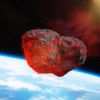 +8 +1
+8 +1An asteroid large enough to destroy life on Earth was found hiding near Venus
The area between Venus and Earth is hard to observe because of the Sun's glare. This newly-observed space rock took astronomers by surprise
-
 +13 +3
+13 +3Scientists Find Potentially Hazardous Asteroid Hiding in the Sun’s Glare
A team of researchers has detected a trio of near-Earth asteroids in the inner solar system, one of which is the largest found since 2014 that poses a potential risk to the planet. The asteroids remained undetected until now because they occupy a region of the sky hidden by the Sun’s glare.
-
 +22 +2
+22 +2‘Zombie’ virus revived after 50,000 years trapped in Siberian permafrost
Researchers from the French National Centre for Scientific Research have revived more than a dozen prehistoric viruses that were previously trapped deep within the Siberian permafrost, according to a pre-print study.
-
 +16 +2
+16 +2The First Ever Wormhole May Have Been Detected, Physicists Claim
Interstellar is looking more plausible than ever before.
-
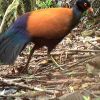 +11 +2
+11 +2‘Like Finding a Unicorn’: Researchers Rediscover the Black-Naped Pheasant-Pigeon, a Bird Lost to Science for 140 Years
A successful expedition in Papua New Guinea captured photos and video of the chicken-size pigeon, highlighting the value of local ecological knowledge as scientists seek out other long-missing species.
-
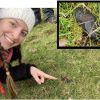 +22 +3
+22 +3Pristine meteorite found within hours of hitting Earth
At about 10 o'clock on the night of Feb. 28, 2021, a fireball streaked through the sky over England. The blazing extraterrestrial visitor was seen by more than 1,000 people, and its descent was filmed by 16 dedicated meteor-tracking cameras from the UK Fireball Alliance and many dashboard and doorbell cams.
-
 +17 +2
+17 +2‘Overweight’ neutron star defies a black hole theory, say astronomers
An “overweight” neutron star has been observed by astronomers, who say the mysterious object confounds astronomical theories. The hypermassive star was produced by the merger of two smaller neutron stars. Normally such collisions result in neutron stars so massive that they collapse into a black hole almost instantaneously under their own gravity. But the latest observations revealed the monster star hovering in view for more than a day before it faded out of sight.
Submit a link
Start a discussion




















